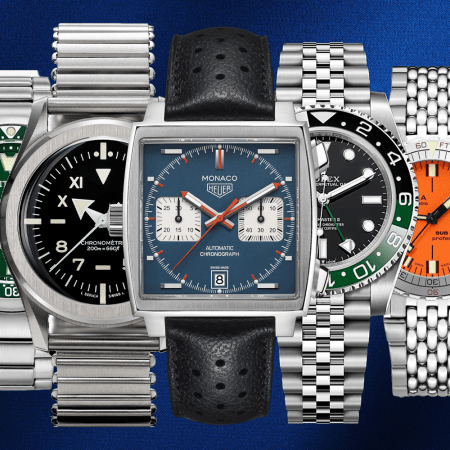Open your closet.
You’ll probably find 20-30 dress shirts of various fits, patterns and comfort levels.
Each one, in its own way, is wrong for you.
To fix your formal wardrobe, we sought the help of Proper Cloth, the biggest custom shirt brand in the US of A. Using a combo of menswear know-how, some proprietary algorithms and a simple online questionnaire that can be completed in about a minute, anyone who orders from PC can get a perfectly sized shirt in under two weeks.
(The company actually offers five ways to get the right fit for your shirt, including the novel idea of sending in a shirt you already own so they can measure it.)
Another problem with buying custom dress shirts is the paradox of choice: When you’re dealing with 500 fabrics and 30 collar options, your first instinct might be to run away and return to the off-the-rack warehouse you’re used to.
Thankfully, we had no such issue with Proper Cloth, which fitted us with a breathable, beautifully tailored white shirt for a summer wedding in Florida (yes, people actually do those). And it took less than 30 minutes of consultation — which is available online, though we went to their showroom in New York for a more personalized approach.
It was there where we spoke with Proper Cloth associate Martel Francois, who taught us nine simple rules for finding the perfect shirt.
Go versatile with the collar: “I always ask, what industry do you work in? If you’re in conservative law firm or financial firm, you want something work-appropriate. A lot our finance guys want the English spread collar and President spread collar. They’re versatile without or with a tie. And the spread, point to point, is about five inches, the industry standard. If you get a spread that’s six, seven inches … that’s aggressive.”
Get tough with your buttons: “Your button choice depends on if you do dry cleaning or you wash the shirt. We recommend the standard or Roma buttons — they’re durable for the average guy. The menswear snob, however, he might insist on the Mother of Pearl buttons. Those are guys who are older, maybe MDs, and they want something premium.”
Length is important: “I suggest creating two different profiles for your shirts, instead of trying a hybrid. Have a dress shirt that’s longer and always tucked in, and have a more casual shirt that’s always unticked and a straight fit, not tapered to the body.”
You can go cheap(er) on the fabric: “The shirt snob might want sea island cotton from Barbados. But your everyday guy will be fine with something he can throw in the wash, non-iron, wrinkle-resistant and has a reasonable price point.”
Posture is important: “You want your shirt nice and clean across the back and chest, and the collar nice and flush on the back of the neck. The collar on some guys is really far back. We make posture adjustments, and rotate the collar a half inch forward or back to allow it to stick flush on the neck without choking.”
Don’t trust the pictures you see in magazines: “Guys are used to seeing GQ ads where a suit looks painted on. The guy’ll look good standing up, but as far as function … if you’re at that photoshoot, he’s pinned all the way through. You’re probably sitting down most of the day. With a suit like that, you couldn’t move. You need mobility and comfort.”
Make room for the watch: “We build a watch allowance on the right or left cuff. It’s a cool option, and it’s an education for guys, who usually think they’re not supposed to cover the watch.”
Place the top button properly: “If they want, we can raise the top button a half or full inch for guys who wear undershirts or guys with hairy chests who don’t want to show it off.”
You’re gonna wanna sit down for this one: “A lot of guys, because of where they work, they blow through the elbows of the shirt. We do two pleats or even three. It gives you more range and mobility in the forearm.”
This article was featured in the InsideHook newsletter. Sign up now.






















